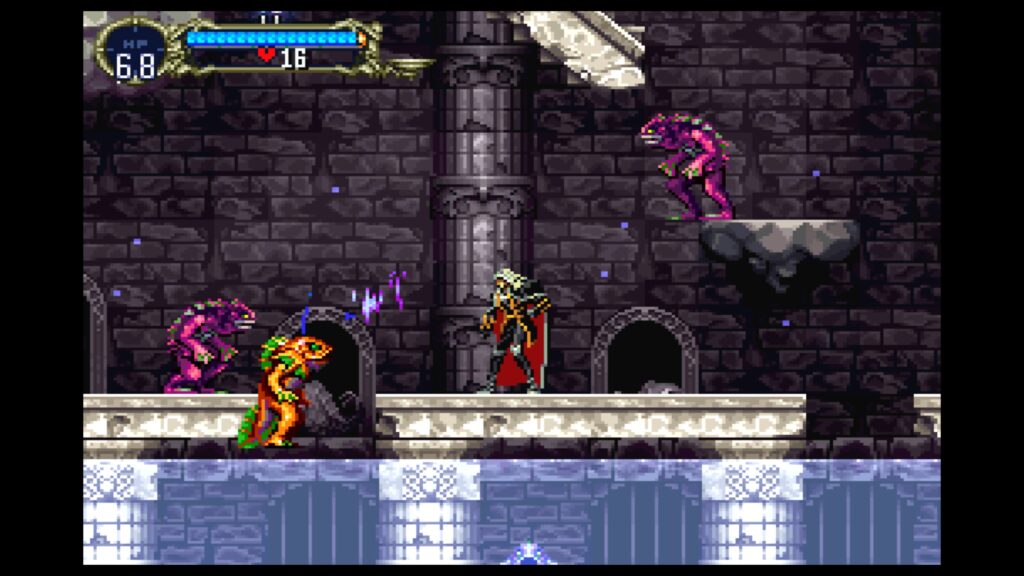
The PlayStation dominated the latter half of the 1990s. In 1997 alone we saw some of the biggest heavy hitters that would endure to this day; Final Fantasy VII, Alundra, Armored Core, Tekken 3, and Crash Bandicoot 2 were only some of the successes.
In this same year, Konami would also release their contribution to the PlayStation’s string of blockbusters. Castlevania: Symphony of the Night proved to be a massive win, and would go on to sell millions even after the end of the PlayStation- with several ports and conversions.
How did KCET do it? How they make such a beloved crown jewel of the metroidvania sub-genre? To this day it has been constantly the source of inspiration of countless indie devs, most recently Record of Lodoss War: Deedlit in Wonder Labyrinth. Just what is it that has made it immortal?
Castlevania: Symphony of the Night
Developer: KCET
Producer: Konami
Platforms: PlayStation, PlayStation Portable (unlockable bonus via The Dracula X Chronicles), PlayStation 3 (via PSN download), PlayStation 4 (reviewed, via Requiem compilation), SEGA Saturn, Xbox 360 (via Xbox Live Arcade), Android, iOS.
Release Date: September 14th, 2006
Players: 1
Price: $19.99 (Castlevania: Requiem) / $4.99 (XBL) / $9.99 (PSN)
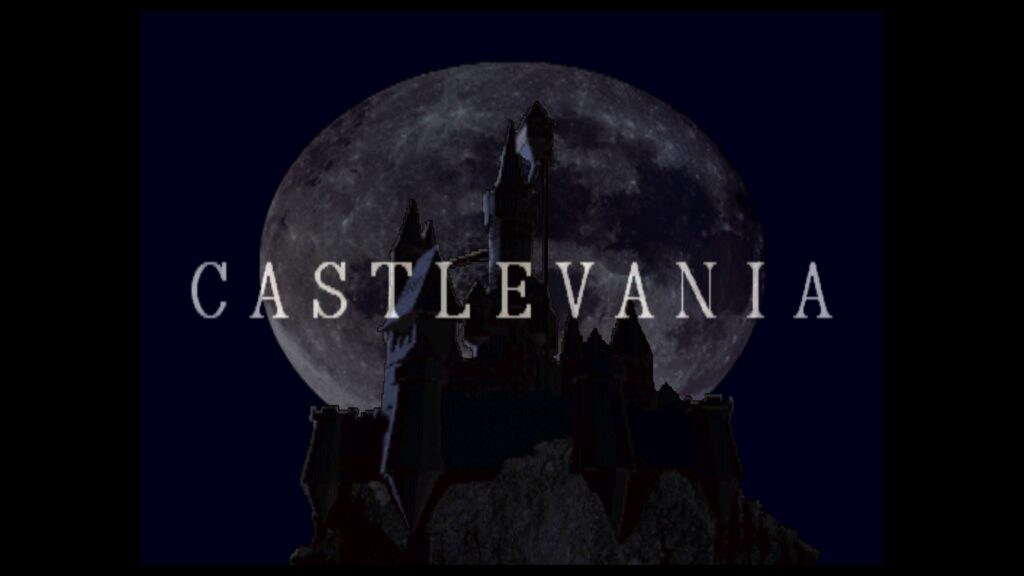
At the time of Castlevania: Symphony of the Night’s release, there were not too many games like it. Today, you can throw a stone and it will probably hit a metroidvania. In 1997 the only options you had for something similar was to play Super Metroid, or if you were really obscure, Ufouria: The Saga.
If you were really desperate, you would play Castlevania II: Simon’s Quest for a non-linear 2D action game with RPG elements. Symphony of the Night might have popularized the gameplay structure, but little do most realize that it is actually not the first Castlevania of its kind.
Simon’s Quest had a sprawling and open ended setting to explore, and while it is a frustrating experience due to questionable design choices, some of its cryptic flair did find its way into Symphony of the Night. Unlike Simon’s Quest, the setting would not be set across a vast region, but a demonic and magical castle.

The entire thesis of Castlevania: Symphony of the Night was due to the series producer lamenting the time he saw copies of Castlevania: Rondo of Blood in a bargain bin. From that moment, he was set on producing a new Castlevania that would have long lasting value, and would stuff the game with content to keep gamers from ever wanting to trade it in.
Older Castlevania games were typically pretty short, but made up for their brevity with incredible difficulty. Symphony of the Night would co-opt many of the design elements seen in Super Metroid, and include RPG elements to allow players to express themselves in the action, which would lengthen the experience.
Symphony of the Night not only marks a major shift in design priorities for the franchise, but it was also the first time story and lore became a much bigger focus. Rondo of Blood did feature anime style cutscenes, but its story was still no different than any other Castlevania before it.
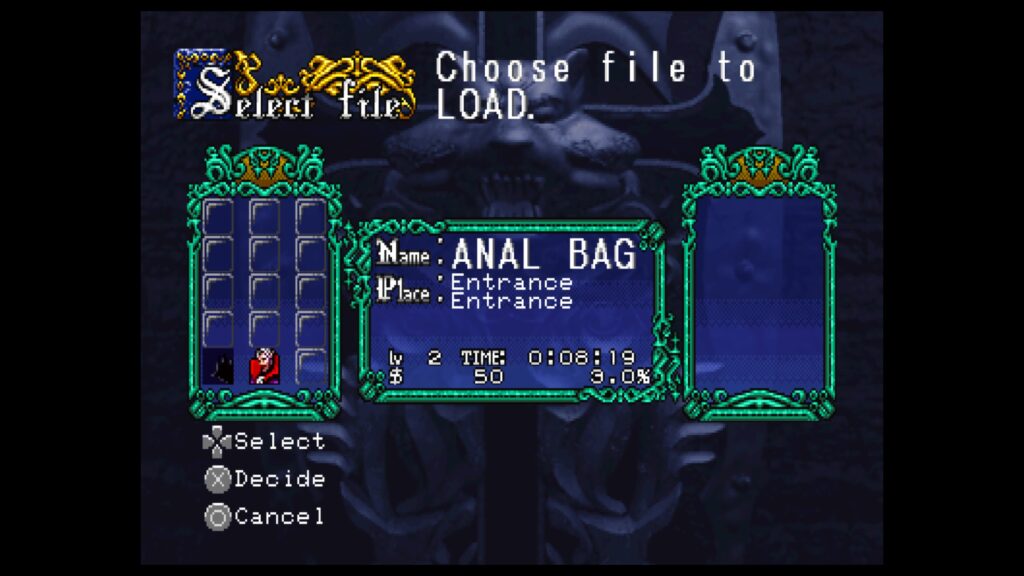
Symphony of the Night has no anime style cutscenes at all, and instead there are simple portraits with voiced dialogue. Unless you are playing Requiem or Dracula X Chronicles, then you would hear some of the most embarrassing voice acting on PlayStation. The old dialogue has since become a meme, and has been endlessly lampooned.
Right from how the game begins, you can tell that this was something special. Symphony of the Night has you play Richter’s final battle with Dracula from Rondo of Blood, albeit with no way to lose.
The music is awesome in this sequence. The kind of epic quality that gets your blood pumping. Compounded with the visuals of a huge demon filling the screen and the early 3D models in the background, it still is a striking and memorable intro.
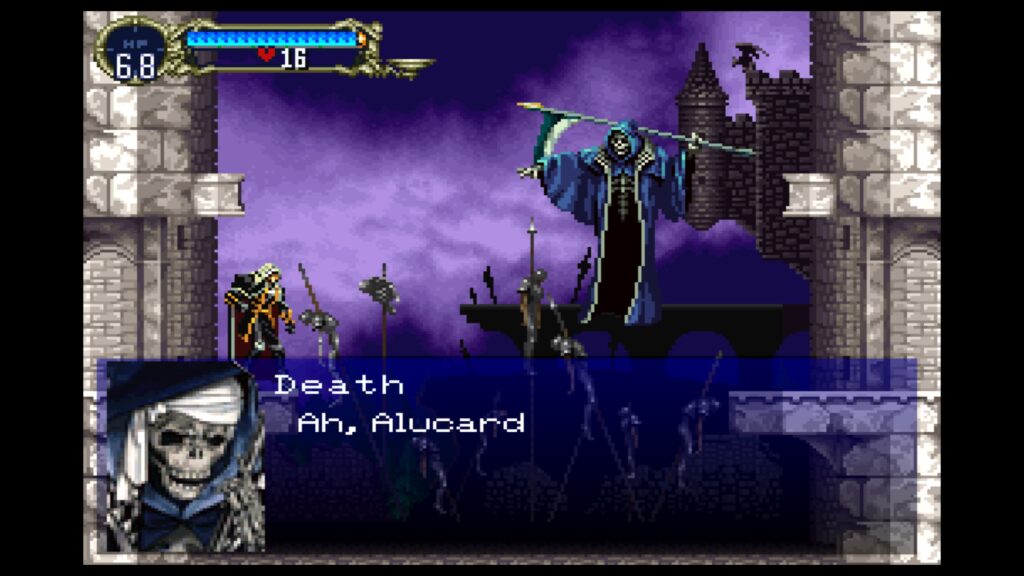
The real game begins with Alucard, everyone’s favorite boy and son of the big bad. It’s been a few years since Richter defeated Dracula, but for some reason there have been rumblings of him being summoned once again.
Alucard gets an unforgettable homecoming visit when Death shows up and grifts him of all his fresh gear. Not only does Alucard have to explore this gigantic labyrinth, but he will have to procure all his own equipment.
Even the kindly old man merchant in the library won’t help Alucard for free. Dracula has seemingly lost millions of dollars in loose change through out his abode and can be found in the weirdest of places; candelabras, vases, and even inside skeletons.
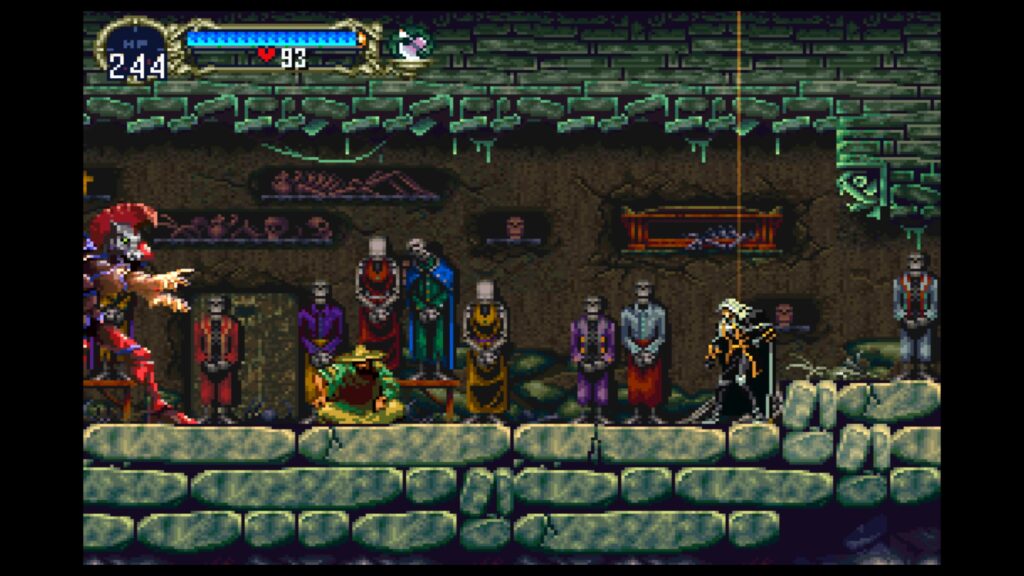
It is easy to see why Symphony of the Night has remained so popular after all this time. The game is packed with details and so much to see and do that is optional. There is so much freedom to explore at your leisure that the castle really does feel like home.
The level design is varied with lots of platforming and precarious ledges with deviously placed enemies. There are even several locations that some people may never know exists if they focus on the main path, giving a profound sense of discovery.
With a huge nonlinear environment, the designers will have to fill it with stuff to find. Ideally the collectibles are worth the effort to seek out and discover. This is where Symphony of the Night does not hold up.
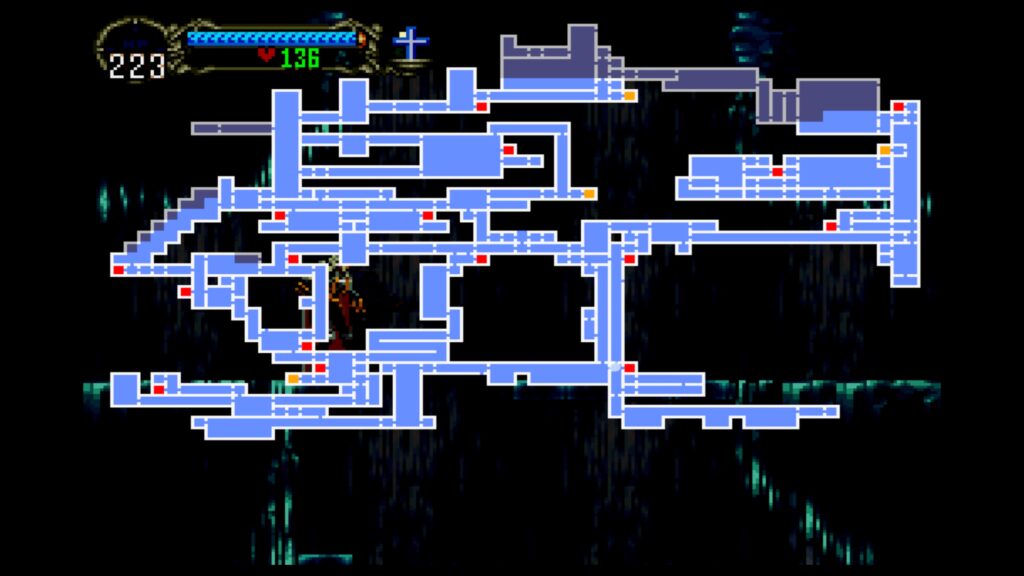
Almost every fan of Symphony of the Night seemingly ignores the fact that the game is so dense with junk. The amount of vendor trash Alucard will collect is countless, and almost all of it will never be used by anyone.
This extends to tons of worthless equipment acquired, and the all-you-can-eat buffet of power-ups that nobody will ever use or will remember.
You’ll make a long excursions to backtrack to a path you couldn’t reach, and all you’ll get for your troubles is a pathetic sword that is 10 points weaker than the one you found earlier that is already too weak to use. Exploring becomes very disappointing after while when you consistently discover weak equipment that you outclassed hours ago.
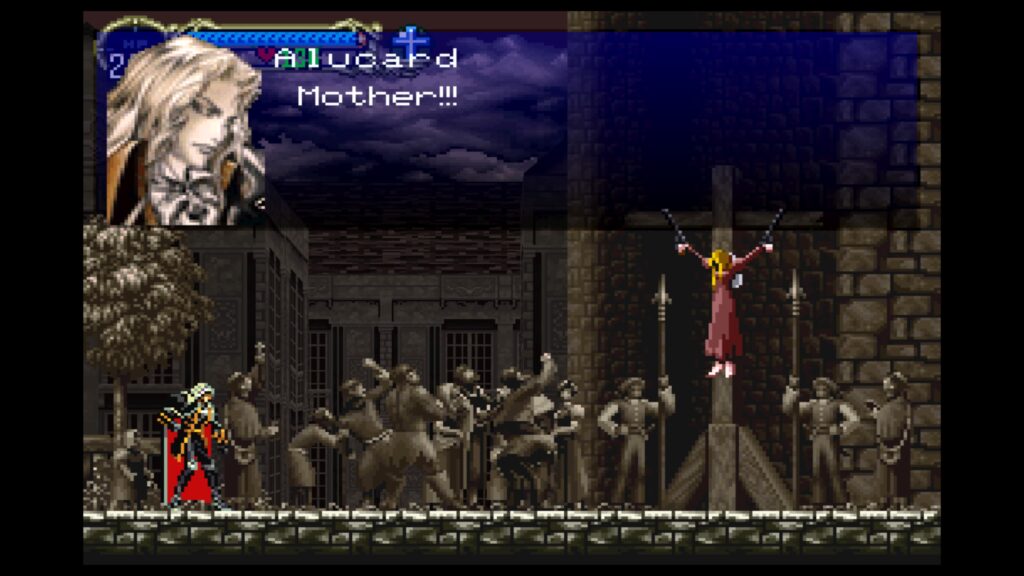
There are so few worthwhile collectibles in the game. Even power-ups have power-ups that have been strewn around the castle that are not necessary, or make the game too easy. Each of the three transformations get further enhancements, but none will help with critical progress.
The transformations themselves are underutilized, and unless you’re interested in cleaning up Dracula’s messy castle for more trash, it is not worth having to go and explore every pixel. The best case scenario is you end up more powerful in a game that is already the easiest Castlevania in the franchise.
It is very easy to get overpowered, and bothering to find some of the better equipment and abilities can make the entire experience a walk in the park. This is a blessing and curse, since it is welcomed to have so much freedom to build Alucard, the game is just not balanced to keep it challenging either.

At a certain point it becomes easy to lose interest in the RPG character building systems just due to the rate the game inundates you with so much inventory junk to fiddle with. Even the simple using of items requires some extra steps, and can’t just be used in the menu.
Eating peanuts requires Alucard to first go into the menu and then equipping the peanuts in his left or right hand. After exiting the menu, only then can he eat the nuts by using them in the equipped hand… But only if you can catch the morsel because Alucard tosses it up in the air. Miss catching the nuts with his mouth and you lose a precious healing item.
Not that you will need to use any of the consumable items, since save points restore all HP, and are plentiful through out the impaler’s homestead. There is a reason why all Castlevania games after Symphony of the Night stopped this method of using items.
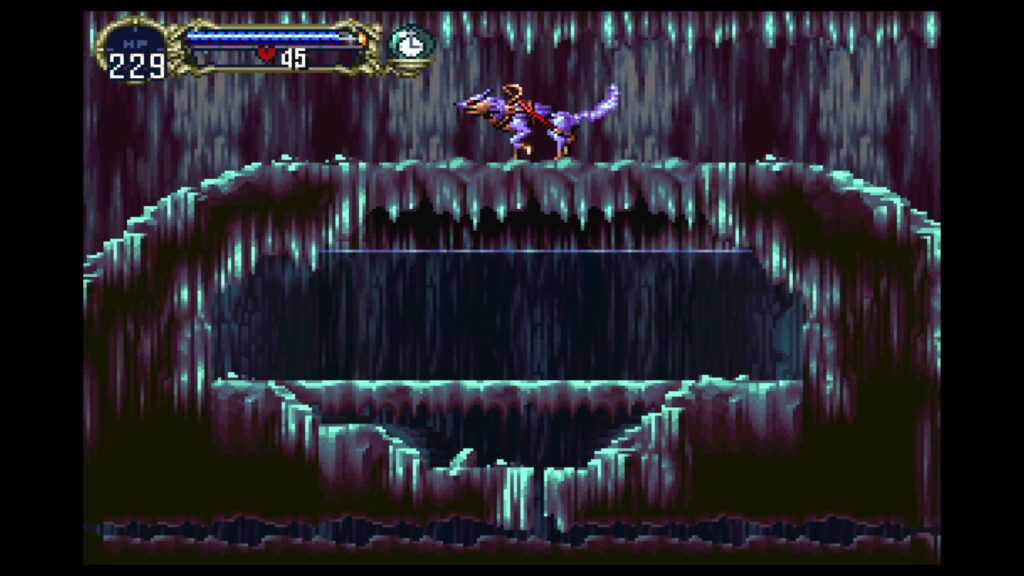
Between the magical pick-ups, the relics, the vampire abilities, transformations, consumable weapons, and permanent upgrades; there is an abundance in what Alucard can do. He won’t need most of them, and the vampire abilities are especially extraneous.
A specific sequence of button inputs must be executed to pull them off. This proves a bit of a hassle, since these are fighting game style inputs, and they don’t translate well to a platformer where the protagonist is not stuck facing one direction. Expect to potentially shoot fire balls in the wrong direction.
It is all too easy to accidentally trigger a “Dark Metamorphosis” when trying to dispatch several small enemies rushing you from all directions. These techniques ultimately become a liability, and are also less efficient than just wailing on monsters with the biggest sword in your stash.

The best aspect of Symphony of the Night, is its graphics. If there was anything about the game that has held up is its visuals, and the artistry poured into every single little asset and frame of animation.
Every area is distinct with its theme and overall layout, making it very easy to develop a mental map of the castle. Massive ornate frescos become landmarks, and lovingly crafted marble statues subliminally guide the player through intended routes.
There is not a single boring room in the castle. No matter where you are, you can expect intricate backgrounds that tell some kind of story or details that make the setting feel lived in. The atmosphere is very palpable, and is one of the reasons why people have kept on coming back.
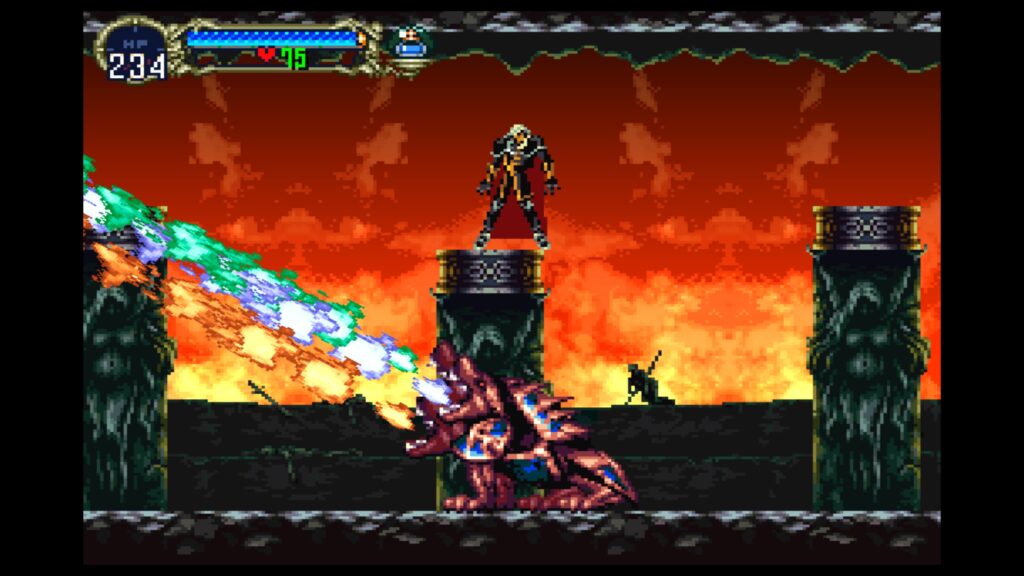
Long and winding passages will lead to vertical areas and sometimes will loop back to a previously unreachable location. Suddenly a new route has been discovered, and now Alucard can make more efficient trips to and from critical zones that demand further exploration.
The castle is enormous; much more than it initially appears since not everything shows up on the map. The developers implemented a halfhearted attempt at fast-travel to jump between various reaches of the castle, and it couldn’t be more frustrating.
Alucard will find specific teleporting rooms, and instead of simply picking one off the map, he’ll have to cycle through each room individually until the intended one. After every teleportation, you’ll have to check the map and then repeat the process, and this adds minutes to such a simple procedure.
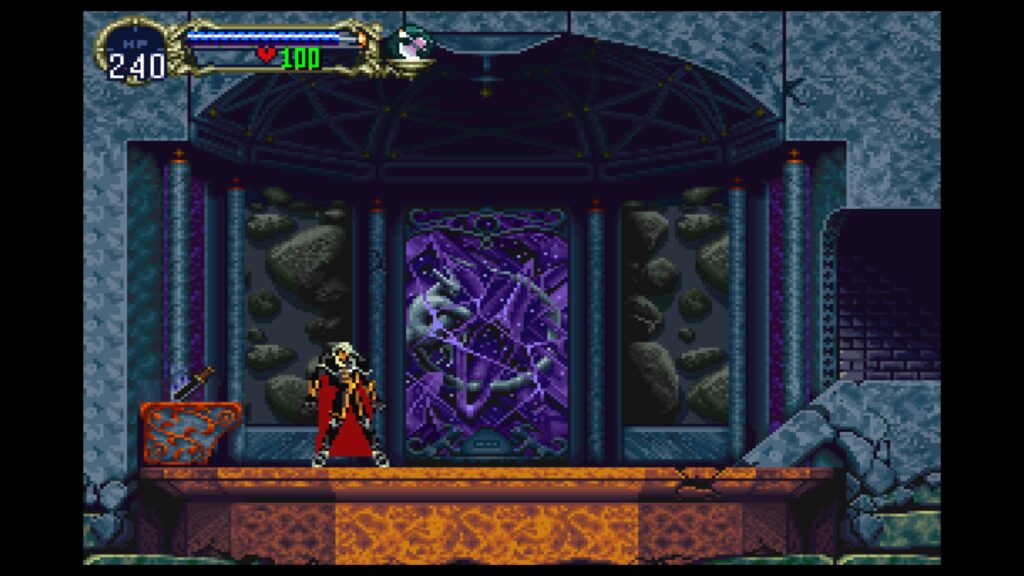
The fast travel is so awful, all future non-linearvanias would get it right by allowing you to simply pick the teleporting room from the map. Symphony of the Night was one of the first of its kind, so it still had some growing pains.
Much like its lavish backgrounds, the dozens of enemies have been given the same attention. It is staggering by how many individual monsters have been designed and animated in this. There are several distinct living armors, different types of deadly frogs, and several varieties of female witches.
There are so many different kinds of enemies in Symphony of the Night, that Konami would end up reusing many of the sprites in future games. It didn’t even matter if they would clash with any change in art style, the artists created an almost endless well to draw from that would be used for years.
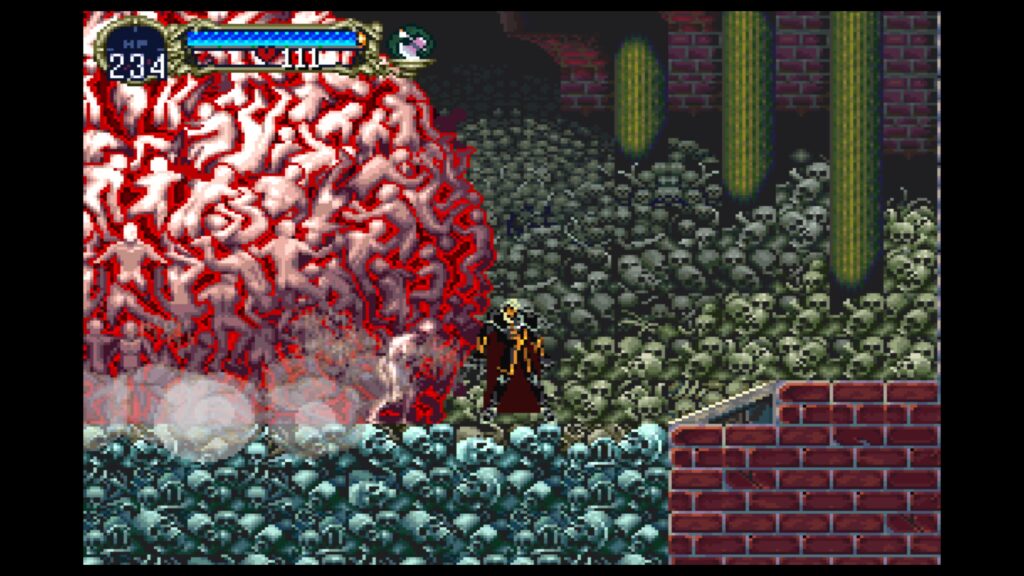
Alucard’s monster index is enormous, and even the most hardcore fan won’t be able to name every single one. This goes for the many boss battles, many of which are completely optional. There really is not a single bad one among them, with most taking place in huge rooms, following patterns, and sometimes incorporating platforming.
The only thing more impressive than the density of monsters in the castle, is the sweeping music that draws you into the world. The various styles and tones heard through out Alucard’s ascension enhance the atmosphere, and linger between classical gothic, jazz, and a bit of metal.
Anyone who wants to play Symphony of the Night won’t have to look too far, since it is widely available on many platforms. Original copies are frustratingly cost prohibitive, but is very affordable on Xbox Live Arcade which is a very good port.
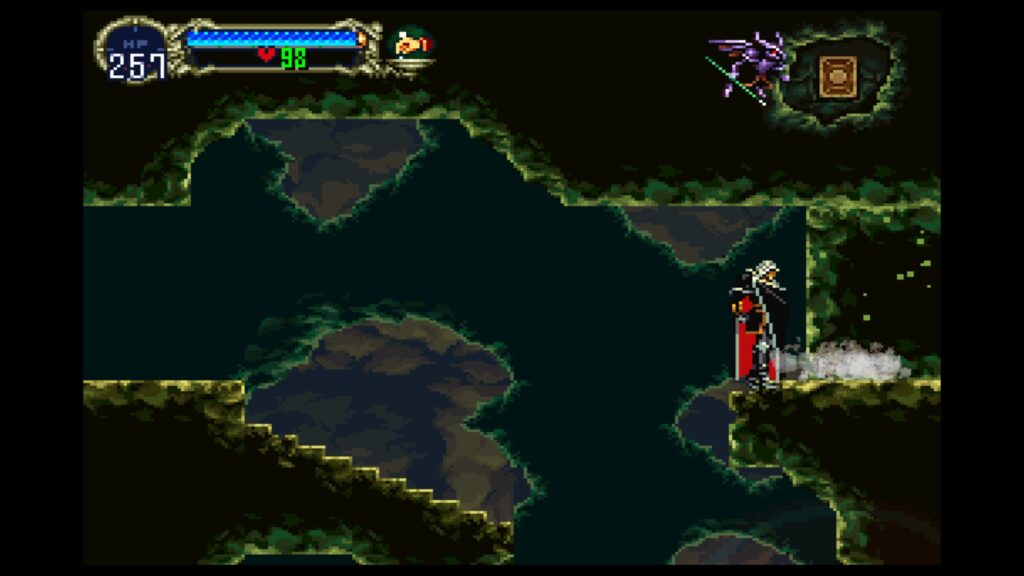
One of the most accessible means is via the Requiem collection on PlayStation 4, which supports 4K and comes with Rondo of Blood. Older platforms like PlayStation 3 and the PlayStation Portable can play Symphony of the Night in its original form, via PSONE Classics on PSN.
If you desire the best portable experience for Symphony of the Night, then the Dracula X Chronicles on PSP is the way to go. It is the same as the version on PlayStation 4, but with the added bonus of the underrated 3D remake of Rondo of Blood.
Symphony of the Night is impressive, but it is far from perfect. It does suffer from sloppy design choices that is seen in the bloat of worthless features and unrewarding exploration. It is still hard to deny its majesty experienced in its auditory and visual tour de force. Even today, its pixel art and animation are unmatched by its contemporaries.
Castlevania: Symphony of the Night was reviewed on PlayStation 4 using a personal copy. You can find additional information about Niche Gamer’s review/ethics policy here.